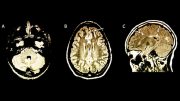
A recent study highlights the deep integration of attitudes with language and suggests that AI models reflect these implicit biases, pointing to the need for cultural interventions. Credit: SciTechDaily.com
Researchers found that global attitudes correlate with language, revealing that implicit biases are often mirrored in AI models like ChatGPT. The study suggests that to address these biases, a focus on the cultural transmission of language is necessary.
In a new study, published today (June 14) in the journal Social Psychological and Personality Science, researchers share evidence that people’s attitudes are deeply woven into language and culture across the globe and centuries.
Exploring Linguistic Associations
The researchers looked at connections between people’s attitudes and language from 55 different topics like rich vs. poor, dogs vs. cats, or love vs. money. They used four text sources: Current English writing and text, English books going back 200 years, and texts in 53 languages other than English. As a measure of people’s attitudes, they used data from over 100,000 Americans; first, direct self-reports, and second, an indirect measure based on a people’s reaction times, often referred to as implicitly-measured attitudes.
They found that the associations picked up by large AI language models like ChatGPT match more closely with the second indirect measure rather than the attitudes they explicitly state.
AI and Social Representation
“With the rise of AI and large language model applications, we as consumers, leaders, researchers, or policymakers need to understand what these models are representing about the social world,” says lead author Dr. Tessa Charlesworth, of Northwestern University’s Kellogg School of Management. “Do they have obvious, explicit preferences? Or do they have more hidden patterns of associations more akin to implicitly measured attitudes?”
Mitigating these subtle biases in AI will require different approaches than looking for explicit biases. “Rather than auditing the models at the end to see if they show obvious, explicit bias, we will likely need to dig deeper into the patterns in the training data itself and provide alternative examples of associations,” says Dr. Charlesworth.
Cultural Impact on Implicit Bias
More broadly, “The data show that implicitly-measured attitudes are revealed in and perhaps reinforced by language, which is a key vehicle of transmitting culture,” notes Dr. Charlesworth. As such, “If we want to durably address and reduce implicit bias in society, we will likely need interventions that adopt a more cultural (or macro level) focus.”
While emphasizing the correlational nature, the researchers aim to continue exploring sociocultural influences. “Given that we saw some variation in which of the non-English languages showed the correlation, it is important to understand what kind of social and cultural factors could help explain greater transmission between bias and language,” says Dr. Charlesworth.
Sociocultural Research Directions
The study lays the groundwork for a better understanding of the subtle ways in which attitudes become entangled with the systems of language and communication, enveloping us – both today and echoing through centuries past.
Reference: “Echoes of Culture: Relationships of Implicit and Explicit Attitudes With Contemporary English, Historical English, and 53 Non-English Languages” by Tessa E. S. Charlesworth, Kirsten Morehouse, Vaibhav Rouduri and William Cunningham, 13 June 2024, Social Psychological and Personality Science.
DOI: 10.1177/19485506241256400









The first I read about language bias was in S.I. Hayakawa, “Language in Thought & Action”, long ago. About 50 years ago at least.
Still, the language itself supports biases in either direction, it’s more the majority *use of the language that supports the bias of the generation when it’s in use. It’d be interesting if the bias shift could’ve been observed extensively between 1930s Japanese and now on the subject of empire and war, for instance.